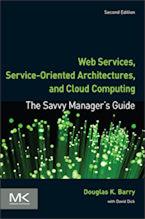J2EE Enterprise Architecture with Staged Updates
This architecture shows two existing relational databases being used by a J2EE application server. One database is being accessed using JDO and the other by JDBC. A third database is being used in the middle tier as an EJB accelerator.
The database used as an EJB accelerator holds data that is a copy of data from one or more of the existing relational databases. All updates from the EJB components are made directly to this database. At some later time, say at the end of a business day, the updated data is written to the existing databases in the EIS tier. This is referred to as having "staged updates" because any updates by EJB components are staged first to the database used by the EJB accelerator and then written at a later time to the underlying relational database. This is in contrast to "in-line updates." An example of staging data would to "publish" a catalog to the middle-tier database based on multiple data sources. The EJB components then could use this "published" data directly without requiring direct Internet access to the databases in the EIS tier.
This architecture might very well provide much better performance than the "in-line updates." It does not include the activity with the EIS Tier within transaction boundaries.
Object databases make for an excellent middle-tier database for use with EJB components. This is because the object model used by EJB components is the same model used by object databases. For more information, see:
- Middle-Tier Architecture
- The importance of a lack of impedance mismatch for performance
- When to Use EJB Accelerators with Java Application Servers

Multiple components use JDO to access the relational database. JDO allows the mapping between Java objects and tables to be defined in one place for use by the multiple components. See JDO Data Conversion.
The JDBC interface is used by the Web Server to access simple data. See When to Use JDBC with Java Application Servers.
Also see:
- Using JDBC with Application Servers
- Using JDO with Application Servers
- Using EJB Accelerators with Application Servers
Context for J2EE Enterprise Architecture with Staged Updates
Related Articles for J2EE Enterprise Architecture with Staged Updates
Author
Douglas K Barry
Principal
You may use this material for your work or classes. Reprint Policy. Be sure to check the menu at the left for other articles available on this site.
The Savvy Manager's Guide
Douglas K Barry is also the author of a book that explains Web Services, service-oriented architecture, and Cloud Computing in an easy-to-understand, non-technical manner.
Web Services, Service-Oriented Architectures, and Cloud Computing: The Savvy Manager's Guide (Second Edition)
by Douglas K Barry with David Dick
This is a guide for the savvy manager who wants to capitalize on the wave of change that is occurring with Web Services, service-oriented architecture, and—more recently—Cloud Computing. The changes wrought by these technologies will require both a basic grasp of the technologies and an effective way to deal with how these changes will affect the people who build and use the systems in our organizations. This book covers both issues. Managers at all levels of all organizations must be aware of both the changes that we are now seeing and ways to deal with issues created by those changes.

